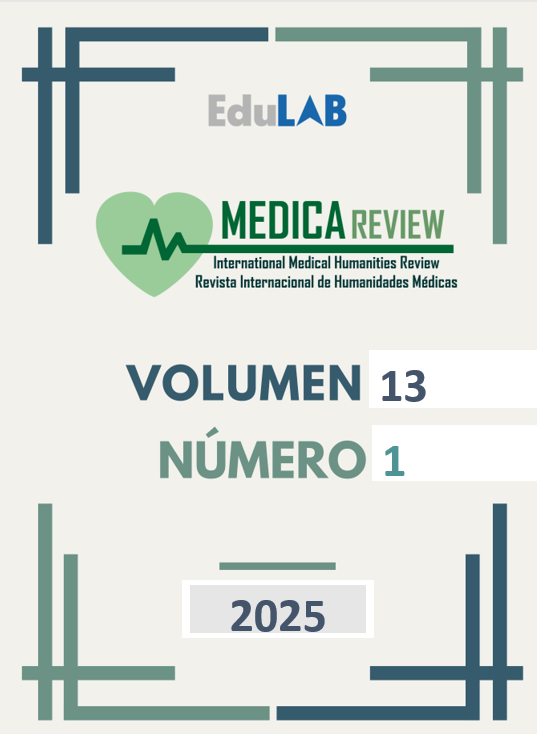The Psychodynamic theory from an evolutionary psychological perspective
Una visión evolucionista de los procesos inconscientes
DOI:
https://doi.org/10.62701/revmedica.v13.5463Keywords:
psicodinámica,, psicología evolucionista, mecanismos de defensa, conflictos, inconscienteAbstract
The integration of psychodynamic and evolutionary psychology provides a broader understanding of the human mind. Evolutionary psychology explains patterns of thought and behavior as adaptations shaped by natural selection, while psychodynamic theory focuses on unconscious conflicts and defense mechanisms. Combining both allows for an understanding of how processes like repressed desires or the tension between id, ego, and superego may have evolved to support survival and social cohesion. Defense mechanisms are also reconsidered as adaptive strategies. Mentalization-based therapy is proposed as a clinical bridge between the two perspectives, offering a practical framework for treating psychological disorders.
Global Statistics ℹ️
|
669
Views
|
344
Downloads
|
|
1013
Total
|
|
References
Bargh, J. A., & Morsella, E. (2008). The unconscious mind. Perspectives on Psychological Science, 3(1), 73–79. https://doi.org/10.1111/j.1745-6916.2008.00064.x
Barton, R. A., & Venditti, C. (2014). Rapid Evolution of the Cerebellum in Humans and Other Great Apes. Current Biology, 24(20), 2440-2444. https://doi.org/10.1016/j.cub.2014.08.056
Bateman, A., & Fonagy, P. (2018). Tratamiento basado en la mentalización para trastornos de la personalidad. Una guía práctica. Desclée de Brouwer.
Bowlby, J. (1969). Attachment and loss: Vol. 1. Attachment. Basic Books.
Buss, D. M. (2019). Evolutionary psychology: The new science of the mind (6ª ed.). Routledge. https://doi.org/10.4324/9780429061417
Del Giudice, M. (2009). Sex, attachment, and the development of reproductive strategies. Behavioral and Brain Sciences, 32(1), 1–21. https://doi.org/10.1017/S0140525X09000016
Dunbar, R. I. M. (1998). The social brain hypothesis. Evolutionary Anthropology: Issues, News, and Reviews, 6(5), 178–190. https://pubmed.ncbi.nlm.nih.gov/19575315/
Freud, S. (1920). Beyond the pleasure principle. Hogarth Press.
Haselton, M. G., & Nettle, D. (2006). The paranoid optimist: An integrative evolutionary model of cognitive biases. Personality and Social Psychology Review, 10(1), 47–66. https://doi.org/10.1207/s15327957pspr1001_3
Herculano-Houzel, S. (2009). The human brain in numbers: A linearly scaled-up primate brain. Frontiers in Human Neuroscience, 3, 31. https://doi.org/10.3389/neuro.09.031.2009
Kenrick, D. T., Griskevicius, V., Neuberg, S. L., & Schaller, M. (2010). Renovating the pyramid of needs: Contemporary extensions built upon ancient foundations. Perspectives on Psychological Science, 5(3), 292–314. https://doi.org/10.1177/1745691610369469
Lewis, DMG, Al-Shawaf, L., y Buss, DM (2020). Psicología evolutiva de la personalidad. En P. J. Corr y G. Matthews (Eds.), The Cambridge Handbook of Personality Psychology (págs. 223-234). Cambridge: Cambridge University Press.
Malafouris, L. Las personas son EXTRAÑAS: hacia una arqueología filosófica del yo. Phenom Cogn Sci (2024). https://doi.org/10.1007/s11097-024-10002-1
Mikulincer, M., & Shaver, P. R. (2007). Attachment in adulthood: Structure, dynamics, and change. Guilford Press.
Öhman, A., & Mineka, S. (2001). Fears, phobias, and preparedness: Toward an evolved module of fear and fear learning. Psychological Review, 108(3), 483–522. https://doi.org/10.1037/0033-295X.108.3.483
Reader, S. M., & Laland, K. N. (2002). Social intelligence, innovation, and enhanced brain size in primates. Proceedings of the National Academy of Sciences, 99(7), 4436–4441. https://doi.org/10.1073/pnas.062041299
Revonsuo, A. (2000). The reinterpretation of dreams: An evolutionary hypothesis of the function of dreaming. Behavioral and Brain Sciences, 23(6), 877–901. https://doi.org/10.1017/S0140525X00004015
García, R. (2022). El narcisismo en Sigmund Freud.
Van Essen, D. C., et al. (2012). The Human Connectome Project: A data acquisition perspective. NeuroImage, 62(4), 2222–2231. https://doi.org/10.1016/j.neuroimage.2012.02.018
Tonna, M. (2024). The evolution of symbolic thought: At the intersection of schizophrenia psychopathology, ethnoarchaeology, and neuroscience. Culture, Medicine and Psychiatry, 48(4), 900–917. https://doi.org/10.1007/s11013-024-09873-5
Wrangham, R. W. (2009). Catching fire: How cooking made us human. Basic Books.
Zadra, A., & Donderi, D. C. (2000). Nightmares and bad dreams: Their prevalence and relationship to well-being. Journal of Abnormal Psychology, 109(2), 273–281. https://doi.org/10.1037/0021-843X.109.2.273
Downloads
Published
How to Cite
Issue
Section
License
Those authors who publish in this journal accept the following terms:
- Authors will keep the moral right of the work and they will transfer the commercial rights.
- After 1 year from publication, the work shall thereafter be open access online on our website, but will retain copyright.
- In the event that the authors wish to assign an Creative Commons (CC) license, they may request it by writing to administracion@edulab.es









